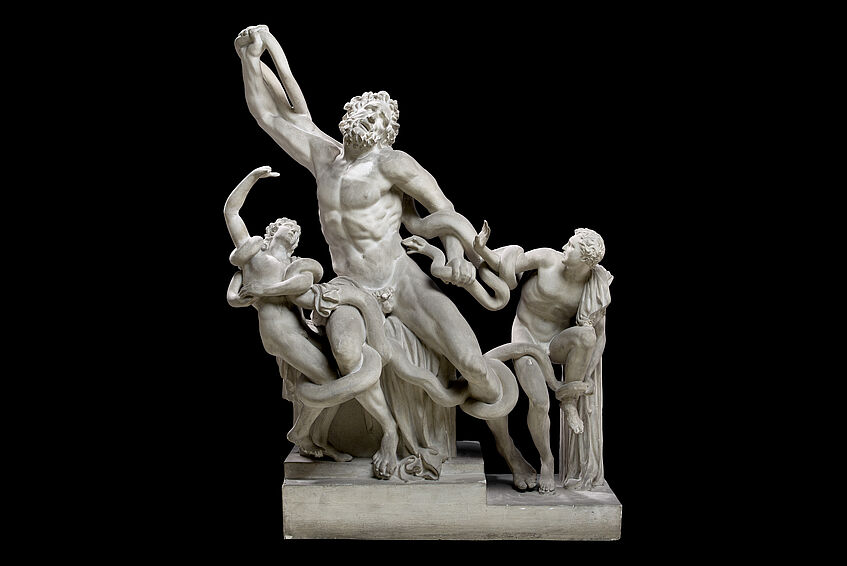Tour B: Childhood in Antiquity
What role did children play in ancient societies? How did their world relate to that of adults? And how were children – in their physical development and at different ages – depicted in ancient artworks? The tour sets out in search of ancient realities and representations of childhood.
B4 The Suffering Innocents

[IKA, Photo: Kristina Klein]
Inv.-Nr. 556
Verkleinertes Modell der Laokoongruppe
Rom, Vatikanische Museen 1064
späthellenistisch
This is a small-scale reproduction of a famous statue group depicting Laocoon and his two sons. The original statue group was just over life size. Laocoon was a Trojan priest who tried to warn his people not to bring the Wooden Horse within the walls of the city and. In his epic poem the Aenied, the Roman poet Virgil gave to Laocoon one of the most the most memorable lines in ancient poetry – ‘timeo Danaos et dona ferrentes’, usually translated as “Beware of Greeks bearing gifts”. But the gods who supported the Achaean side moved quickly to silence him, sending sea serpents to drag Laocoon and his two young sons under the waves.
The original statue group was one of the most celebrated in the Roman world. Pliny the Elder claimed that it had been made by three Rhodian sculptures around the 1st century BCE or in the early 1st century CE, but that it was itself a copy of an earlier Hellenistic Greek sculpture. The statue group was not only written about by authors such as Pliny, but was also depicted in Roman paintings, including in one scene painted on the walls of a house in Pompeii. Since then, it has become one of the most widely discussed of all ancient artworks, celebrated for its virtuoso depiction of the human body under stress.
The depiction of the children in this case is almost as if they are miniature adults. Both boys have the well-developed musculature and the fine facial features, rather than the soft bodies and childlike features that we might expect in portrayals of children. This adult-like portrayal of children is more typical of earlier, Classical Greek art, but in this Hellenistic example we know that the two flanking figures are children not just because of this size relative to the central adult figure, but also because we know the story.
One boy looks up at his father for help in vain, while the other flails in desperation as he is swept away. These children were innocents, condemned to a watery death for no fault of their own. The inclusion of the children, and the strong emotional response that they provoke in the viewer, significantly adds to the power of this statue group. Seeing Laocoon struggling with the serpents on his own would not be nearly as moving. In antiquity, as today, the choice of artists to portray the sufferings of children is a potent way of connecting with their audiences.
